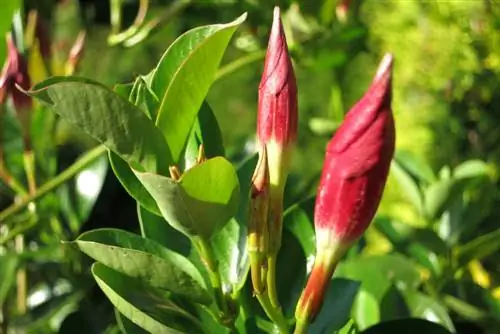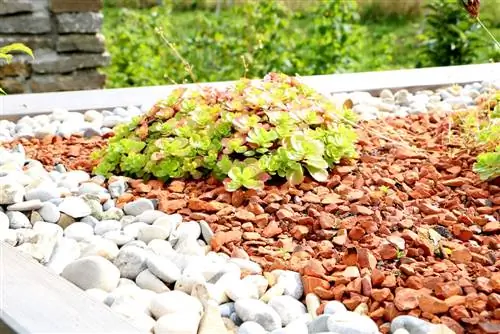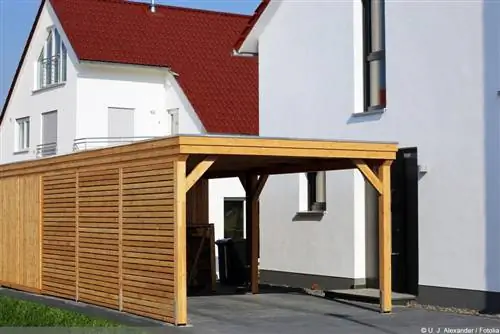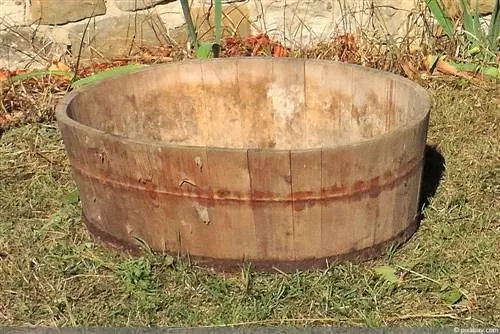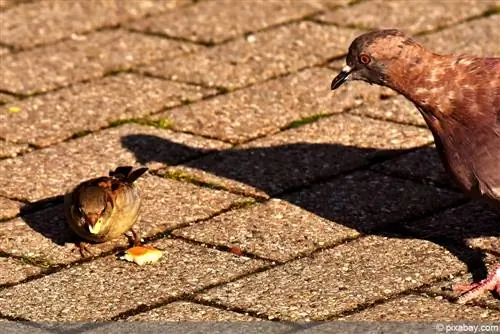- Author admin [email protected].
- Public 2023-12-17 03:39.
- Last modified 2025-06-01 06:48.
A roof terrace is there for the most wonderful time of the year: summer. But then the sun and heat are also constant visitors. We make ourselves comfortable under the parasol or escape into the house from time to time. The plants have to endure outside. That's why they should be specimens that can cope with these extreme conditions. You can look forward to greenery and flowers from the following plants.
Flowers for hanging baskets and window boxes
In hanging baskets and flower boxes, annual flowers are usually cultivated. From spring onwards, they create a pleasant atmosphere and make a hot terrace bearable. Their existence ends with the first frost at the latest. These plants are ideal for the owner of a roof terrace, as he usually does not have a suitable space to overwinter frost-sensitive plants.
Elfspur - Diascia

A sunny terrace produces plenty of delicate flowers from the elf spur from June onwards. Depending on the variety, they shine in the colors white, pink, red, orange or violet. However, the sun terrace should also provide a roof for the elf's spur, as rain and wind have proven to be disruptive factors. Otherwise, this plant is easy to care for and therefore also suitable for a beginner. Assuming he likes to use the watering can almost every day in the summer.
Tip:
Clean out the spent flowers regularly, then the plant will sprout more buds and bloom until October.
Geraniums - Pelargonium
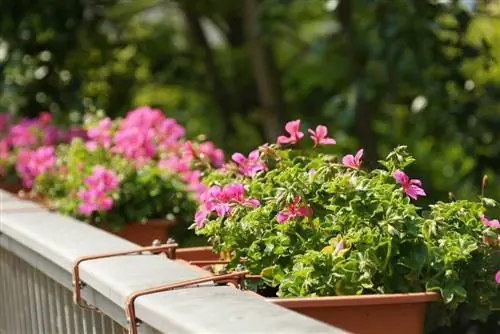
Even very hot roof terraces cannot prevent geraniums from blooming. They open the first buds in May and only stop producing flowers when the temperatures are below zero. Admittedly, geraniums are no longer exotic in this country. But with their variety of varieties and countless flower colors, there is never a dull moment. The leaves of the scented geraniums also spread a spicy scent.
Goldmarie - Bidens ferulifolia
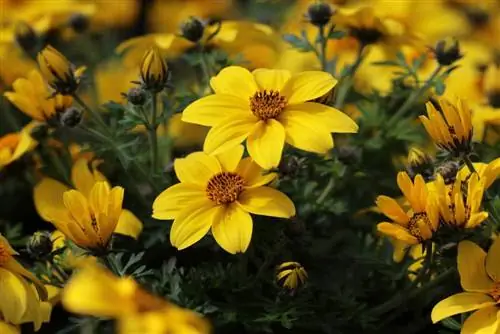
The one-year-old Goldmarie needs direct sunlight, then she grows surprisingly well. It grows bushy and about 30 cm high, but individual tendrils can reach a length of up to one meter. It blooms yellow from May to October. The small, star-shaped flowers are surprisingly rainproof, making the Goldmarie also suitable for an open roof terrace.
Hussar button - Sanvitalia procumbens
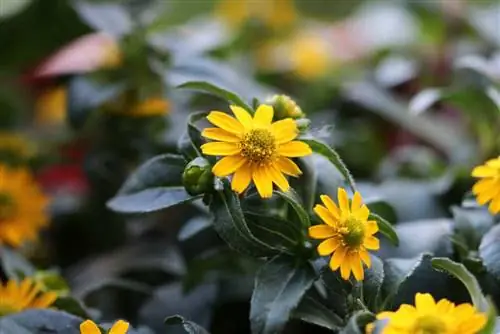
This annual plant tolerates light frosts and can start its season as early as April. As a thank you for the abundant sunshine, it produces numerous sunny yellow flowers from July onwards, which look like miniature sunflowers with a diameter of 1-2 cm. If dead flowers are removed regularly, Hussar button proves to be a long-lasting companion, sending us off to the warm interior in November with its last flowers.
Cape basket - Osteospermum
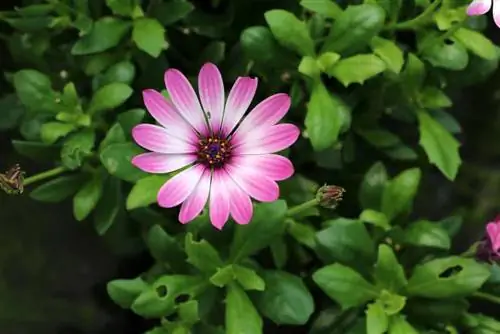
This plant comes from South Africa, where it knows hot days all too well. A sunny roof terrace therefore offers ideal living conditions, as long as you can find a place protected from the wind. Cape basket grows upright and bushy, up to 40 cm high. The flower shape is similar to the daisy, which is why the plant is now also called Cape daisy. But it is much more colorful. Their flowers can be white, but also yellow, red, orange, blue or even multicolored. It harmonizes well with other plants.
Tip:
If the Cape basket closes its flowers unexpectedly, you should rethink your daily planning. Because this reaction heralds imminent rain.
Male loy alty - Lobelia erinus
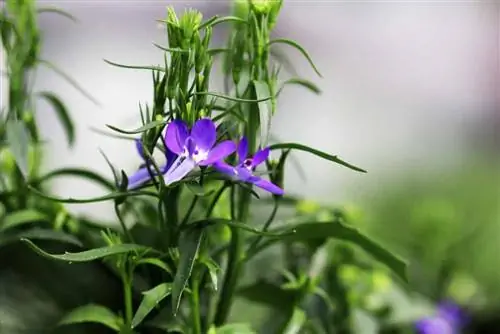
A sunny, hot terrace is ideal for this plant because it then produces a particularly large number of flowers. When viewed from a distance, the small works merge into a single blue surface. Hanging varieties are suitable for hanging baskets and upright varieties for balcony boxes. They all develop beautifully compactly and are also suitable as a background for standard plants in the pot.
Petunias - Petunia
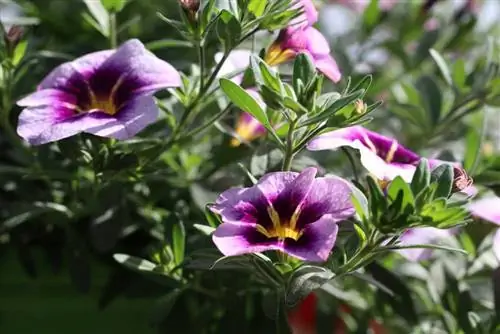
The petunia is perfect for hot and sunny days because it needs a lot of warmth and light. Varieties with larger flowers, the so-called Grandiflora species, are more sensitive and should be protected from the wind. Hanging varieties are ideal for hanging baskets. The wide range of colors can make choosing difficult. The daily care required in summer should also be taken into account. This includes regular cleaning and watering up to twice a day.
Tip:
Start growing the plant on the warm windowsill as early as mid-February. If she enters the roof terrace after the Ice Saints, she will bloom even faster.
Student Flower - Tagetes
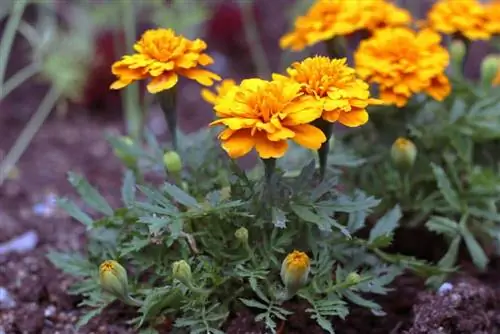
The student flowers are no longer modern enough for many people. After all, it has been part of cottage gardens for centuries. But it also has the potential to decorate a hot sun terrace. It is almost ideal for people who can only spend a little money on plants. A seed bag is inexpensive and provides countless plants that are also easy to care for. And maybe you'll even like the yellow-orange flowers.
Vanilla flower - Heliotropium arborescens
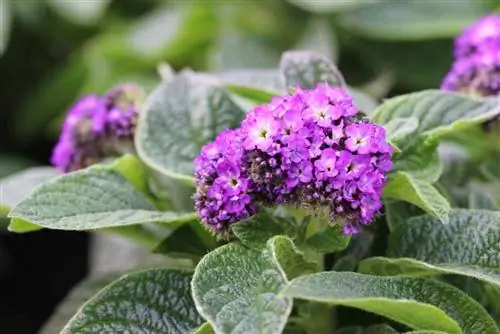
Their scent is enchanting and spreads especially in the evening. The dark purple flowers are what exude it. The vanilla flower grows densely branched and reaches a height of up to 60 cm. It can be cultivated as an annual or perennial, but then has to be overwintered.
Note:
The vanilla flower is highly poisonous from flower to root. It should not grow on a sun terrace where there are children.
Plants for containers
Container plants are usually cultivated for several years. They get bigger over time and become even more attractive. But as beautiful as they decorate a hot terrace in summer, they can cause us worries in autumn. Because frost-sensitive plants cannot stay there. So before you buy, ask yourself whether you can offer them suitable winter quarters.
Dipladenia - Mandevilla
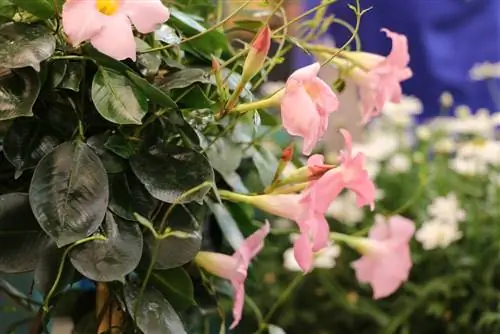
Dipladenia is a climbing plant that needs a climbing aid in the pot. It is perennial if overwintered appropriately, but we usually cultivate it as an annual. The funnel-shaped flowers can be yellow, white, pink or red, depending on the variety. It is in full bloom as early as May and does not stop blooming until the first frost. She likes warmth and light, so a sunny terrace is a good summer home for her.
Triplet flower - Bougainvillea
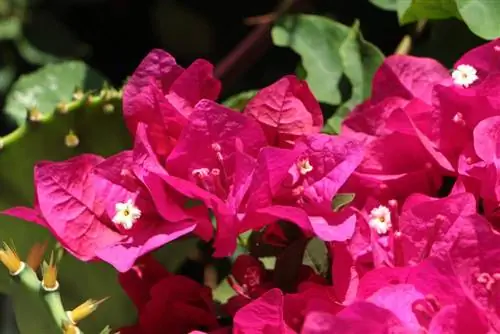
We encounter bougainvillea outdoors in southern countries, where it sometimes grows as an impressively large climbing shrub. In this country it has to stay in the bucket. The three-petaled inflorescence gave it the name triplet flower. The flowers can be white, yellow, orange or red. With good care, the plant only allows itself short breaks and always produces new flowers. It is particularly important to keep cutting back your shoots. She is also hungry for nutrients and needs water in the morning and evening on hot days.
Oleander - Nerium oleander

A sunny and hot terrace guarantees lots of flowers. That's why oleander is one of the most popular potted plants for sun terraces. Over the years it becomes larger and more beautiful and conjures up a Mediterranean flair with its mostly white or pink flowers. Its flowering time is summer, from June to September.
Tip:
Pluck off wilted flowers carefully, do not use scissors. At the tips of the umbels there are already the plants for next season's flowers. They shouldn't get hurt.
Palm trees
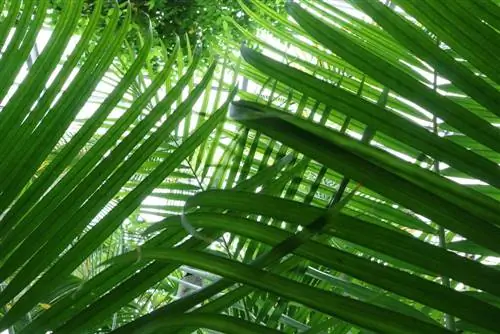
If you have enough space on the sun terrace, you can also use a palm tree. You can't get more of a holiday feeling. But although we associate palm trees with sunny vacation spots, not every species is suitable for a sunny and hot terrace. The problem usually lies in air that is too dry. You are on the safe side with the robust date palm, which tolerates dry heat well. If another type of palm tree looks more appealing to you, you should definitely consider its needs before purchasing. Otherwise the pleasure will only be short-lived.
African Lily - Agapanthus
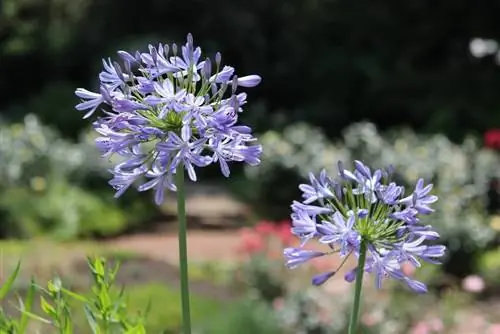
The flowering period of the African lily is short, only from June to August. The perennial's many umbel-shaped inflorescences are real eye-catchers. Around 100 small, funnel-shaped individual flowers form a ball that sits high above the foliage on a long flower stalk. Depending on the variety, the flowers are white, blue or purple.
Black-eyed Susan - Thunbergia alata

This climbing plant prefers a location in full sun. A hot roof terrace will be able to offer her just such a feel-good place. Only rainy summers can reduce the abundance of flowers. The flowers each have a black dot in the middle, which explains the unusual name. Typically they are yellow-orange, but white varieties are also available. This sun worshiper can be grown from seeds on a windowsill from February.
Marguerites - Argyranthemum
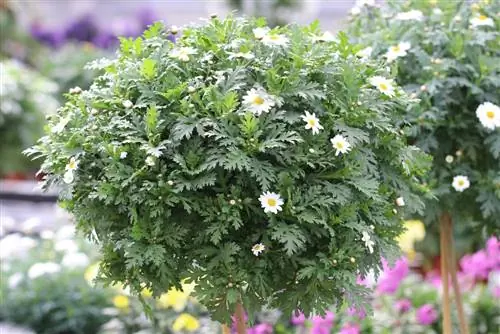
This bushy plant is one of the most popular potted plants. From May onwards, simple white flowers with a yellow center form at the tips of the numerous branches. Visually they look like oversized daisies. However, numerous hybrid varieties are now available that also bloom in different colors or double. The bright white of the flowers can be seen even at dusk. The marguerite also exudes an intense scent.
Lantana - Lantana camara
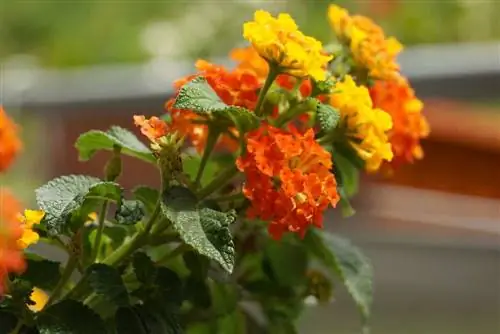
The lantana offers us a play of colors. The flowers, which appear in May, are initially yellow and then turn orange. In autumn they can take on an intense red color. The plant can be trained as a shrub or standard tree. As beautiful as the plant is, it is too dangerous for a household with small children. Strongly toxic substances lie dormant inside.
Citrus plants - Citrus
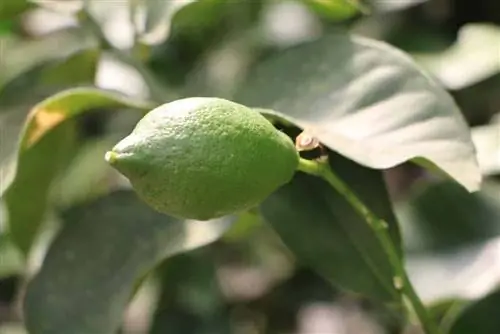
Citrus plants provide edible fruits and are widely grown in Mediterranean countries for this reason. For us, their decorative value is more important, although every owner is also happy about usable fruits. But the shiny foliage and fragrant flowers alone beautify any sunny terrace. The most popular citrus plants in this country are:
- Lemon trees
- Lime trees
- Orange trees
Callistemon - Callistemon citrinus
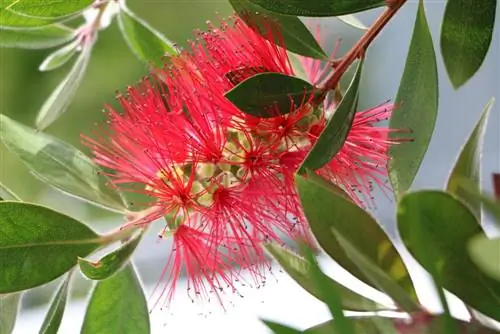
This plant is not a common sight among potted plants. The flower shape of the five to ten centimeter long inflorescences resembles a bottle brush. But they are incomparably more beautiful to look at and are also bright red. A great contrast to the green foliage. The reason why Cylinder Cleaner should live on a hot roof terrace is due to his preference for direct sunshine. The plant then develops splendidly, but is also a potted plant that needs constant water.
Vegetables and sweet fruits
In times of climate change, urban gardening is on everyone's lips. Vegetables and fruit are successfully grown on tiny areas in the middle of residential areas. A sunny, hot terrace is perfect for this. Almost all edible plants need sun to produce lots of ripe fruits. You can therefore fill a free pot with the following plants instead of just a flower plant:
- Tomatoes
- Peppers
- Aubergines
- Zucchinis
- pole beans
- Strawberries
- small raspberry varieties
Tip:
Herbs such as basil, thyme, sage, rosemary, oregano and lavender are also suitable for a sun terrace. They bloom and smell wonderful and can enrich our dishes every day.

